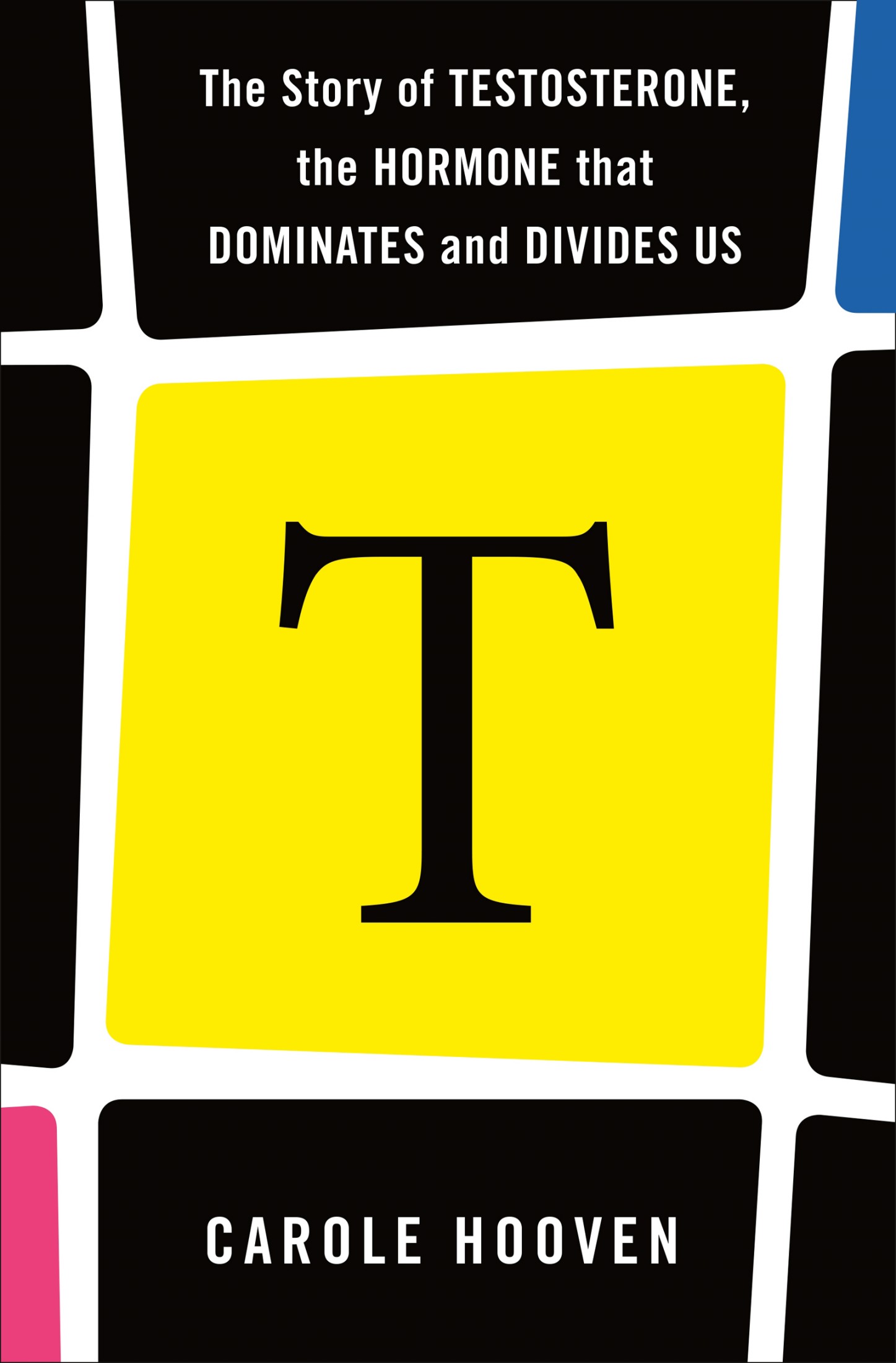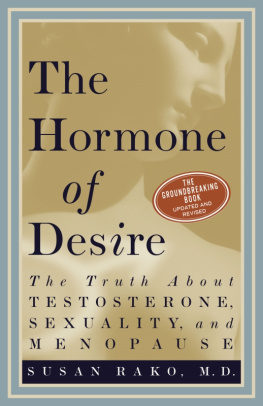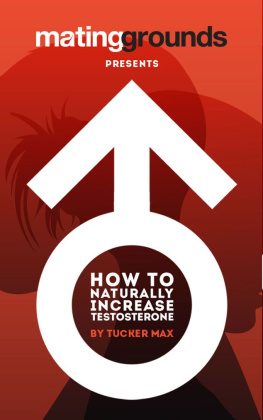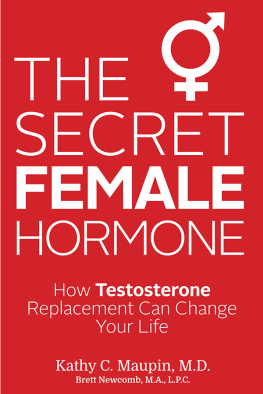Carole Hooven - T: The Story of Testosterone, the Hormone that Dominates and Divides Us
Here you can read online Carole Hooven - T: The Story of Testosterone, the Hormone that Dominates and Divides Us full text of the book (entire story) in english for free. Download pdf and epub, get meaning, cover and reviews about this ebook. year: 2021, genre: Romance novel. Description of the work, (preface) as well as reviews are available. Best literature library LitArk.com created for fans of good reading and offers a wide selection of genres:
Romance novel
Science fiction
Adventure
Detective
Science
History
Home and family
Prose
Art
Politics
Computer
Non-fiction
Religion
Business
Children
Humor
Choose a favorite category and find really read worthwhile books. Enjoy immersion in the world of imagination, feel the emotions of the characters or learn something new for yourself, make an fascinating discovery.

- Book:T: The Story of Testosterone, the Hormone that Dominates and Divides Us
- Author:
- Genre:
- Year:2021
- Rating:3 / 5
- Favourites:Add to favourites
- Your mark:
- 60
- 1
- 2
- 3
- 4
- 5
T: The Story of Testosterone, the Hormone that Dominates and Divides Us: summary, description and annotation
We offer to read an annotation, description, summary or preface (depends on what the author of the book "T: The Story of Testosterone, the Hormone that Dominates and Divides Us" wrote himself). If you haven't found the necessary information about the book — write in the comments, we will try to find it.
Carole Hooven: author's other books
Who wrote T: The Story of Testosterone, the Hormone that Dominates and Divides Us? Find out the surname, the name of the author of the book and a list of all author's works by series.
T: The Story of Testosterone, the Hormone that Dominates and Divides Us — read online for free the complete book (whole text) full work
Below is the text of the book, divided by pages. System saving the place of the last page read, allows you to conveniently read the book "T: The Story of Testosterone, the Hormone that Dominates and Divides Us" online for free, without having to search again every time where you left off. Put a bookmark, and you can go to the page where you finished reading at any time.
Font size:
Interval:
Bookmark:


The author and publisher have provided this e-book to you for your personal use only. You may not make this e-book publicly available in any way. Copyright infringement is against the law. If you believe the copy of this e-book you are reading infringes on the authors copyright, please notify the publisher at: us.macmillanusa.com/piracy.
For Griffin
If we were not under their sleeping nests when the chimpanzees woke up, then we would miss out on the peethe key to the chimps testosterone levels. So I prepared, as I did almost every morning during the eight months I spent with the chimps, for a walk through the predawn jungle.
Evolution has fashioned an elegant system that motivates us to start our days with the benefit of the light (and heat) emitted by our star. Like all diurnal animals (those that are active during the day), we sync our sleep-wake cycles with our planets twenty-four-hour rotation around its axis. When the morning sun is sensed by the photoreceptor cells in our retinas, the information is transmitted to the pineal gland, a tiny pine coneshaped organ, deep in the center of our brain. In response, the gland decreases its production of the sleep hormone melatonin, which nudges us toward a particular behaviorwaking up.
At least, this is how it worked before we humans got used to artificial light. But since chimps are sticking to the old schedule, I had to get my butt out of bed while my melatonin was still high. I attempted to counteract this groggy state of affairs with a dose of caffeine delivered via coffee, which I made with rainwater on the field sites propane-powered stove.
Armed with my Wellies to protect from such inconveniences as army ants, mud holes, and black mamba snakes, a flashlight, and a foot-long machete (for bushwhacking), I headed out to meet my Ugandan field assistants. This was a usual day of chimpingtagging along with the chimps and taking notes on their lives and activities in the Kibale Forest of Western Uganda.
After a hike of about an hour, I rested on the forest floor near the base of one of the trees in which the chimps slept, high in the treetop nests theyd constructed the night before. I tried to soak up every detail of the dramatic transformation of the night forest. The steady hum of trilling insects was drowned out by the growing cacophony of bird and monkey calls, and slivers of sunlight pierced through the undergrowth, turning dewdrops into glowing gold beads that clung to the green foliage. I was waiting for one sound in particular, that of rustling from above, the first stirrings of chimps waking up. That was my cue to prepare.
Chimps arent much different from humans in terms of their first morning needsthey need to go! But while we stumble out of bed and head to the bathroom (or outhouse or pit), chimps just stick their rear ends out, over the side of their nest. I did my best (which was not always good enough) to be far enough away to shield myself from the urine that rained down about thirty feet through the leaves, but close enough that I could catch some. I did that with the help of a long stick with a forked end, over which I had tied a plastic bag.
In this way I was making a small contribution to the data, both behavioral and physiological, that was collected by researchers from the Kibale Chimpanzee Project. This treasure trove of information allows scientists to gain insights into the origins of all kinds of behaviors. But we were particularly interested in sex, aggression, and dominance, which are all affected by the subject of this book: testosterone, or, as insiders call it, T. With human subjects, we can just ask them to spit into a tube. But wild chimps are less cooperative, so we measure T in their urine (and feces) instead.
I carefully pipetted what little pee I managed to catch from the plastic bag into test tubes, to be carried back to the field site for later transport back to the endocrinology lab at Harvard. After a few minutes of rustling and relieving, the chimps shimmied down the tree trunks to begin their day, with the field assistants and me in tow.
Chimpanzees live in communities, usually comprising about fifty chimps. In some ways, each community is like a group of people living in a small town, with well-defined and defended borders, and hostile relationships with the neighboring towns. Imoso was like the mayorthe alphaof this town, called Kanyawara. It was just one of several such communities located within the vast forest near the border with the Democratic Republic of the Congo. Imoso was temperamental and despotica leader who must have been more feared than liked. Each day, smaller groups of chimps from the community, called parties, would congregate and spend the day together, and Id follow one of the parties. When Imoso was part of a party I followed, I could count on lots of grunting, screaming and hooting, threatening, slapping, stick dragging and throwing, and chest pounding. There was one sure way to make things even more exciting, and that was to add a fertile (estrous) female to the mix. Lots of sex, and even more aggression, as the males competed for the right to mate with her.
Other days were punctuated less with bouts of high drama, and more with the ebb and flow of nurturance and play. Little ones would cling and cuddle, nurse, tumble and chase their siblings and friends, or perch like royalty on moms back, as they traveled from one feeding patch to another. Those were the times I followed parties without the adult males.
On one January day, Imoso seemed calmer than usual. And on this day, unusually, he decided hed like to hang out with only one female and her two small children. Leaning against a tall fig tree, I opened my notebook. Outamba sat behind Imoso on a large downed tree in a clearing. She expertly searched through his thick, dark hair, separating and flattening it, examining the area for dirt or parasites, deftly removing what she found and popping the tasty bits into her mouth. The baby Kilimi and her older sister Tenkere frolicked in a patch of grass in the heat of the equatorial midday sun, amid the din of birds and insects.
Outambas ear-piercing screams jolted me out of my tranquil state and sent my heart racing. I bolted upright. Imoso jumped up so that he stood on the fallen tree and began to pound Outamba with his fists while also kicking her. She tumbled to the ground, and tiny Kilimi quickly hopped into the refuge of her arms. Outamba huddled over her daughter in a protective embrace, her back exposed to Imosos assault. I tried to accurately record all that was happeningwho was doing what to whom, and for exactly how long. (I was lucky to have been with one of the projects experienced field assistants, John Barwogeza, who gave me a thorough debriefing on all that I had missed.) After a few minutes of this brutality, already the longest and most severe beating Id ever seen, Imoso picked up a large stick and began hitting Outambas head and back with it. Tenkere, just three years old and no more than two feet tall, raced around Imoso and pounded at him with her impotent little fists as the giant beat up her mother. But kicking, hitting with fists and sticks wasnt enoughImoso got even more creative and hung from a branch, leaving his feet free to stomp on and kick her with greater force. Nine stunning minutes later, it was over.
The beating left Outamba bleeding from the tender, hairless skin on her bottom, but at least her kids were unharmed and she was able to scamper off with them.
Font size:
Interval:
Bookmark:
Similar books «T: The Story of Testosterone, the Hormone that Dominates and Divides Us»
Look at similar books to T: The Story of Testosterone, the Hormone that Dominates and Divides Us. We have selected literature similar in name and meaning in the hope of providing readers with more options to find new, interesting, not yet read works.
Discussion, reviews of the book T: The Story of Testosterone, the Hormone that Dominates and Divides Us and just readers' own opinions. Leave your comments, write what you think about the work, its meaning or the main characters. Specify what exactly you liked and what you didn't like, and why you think so.






